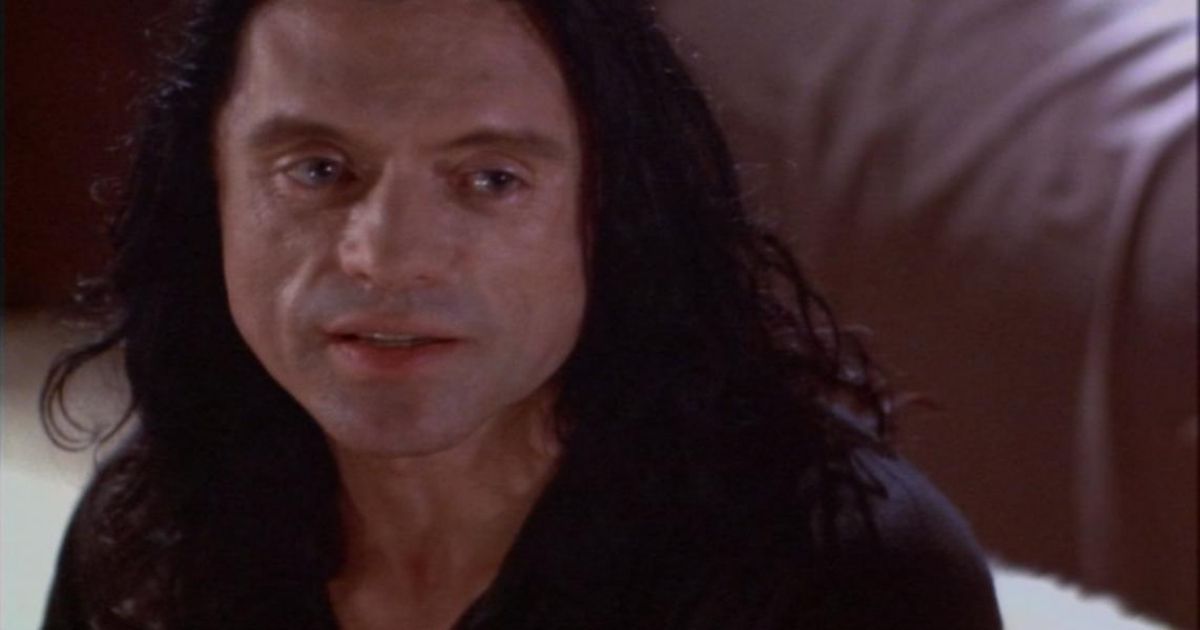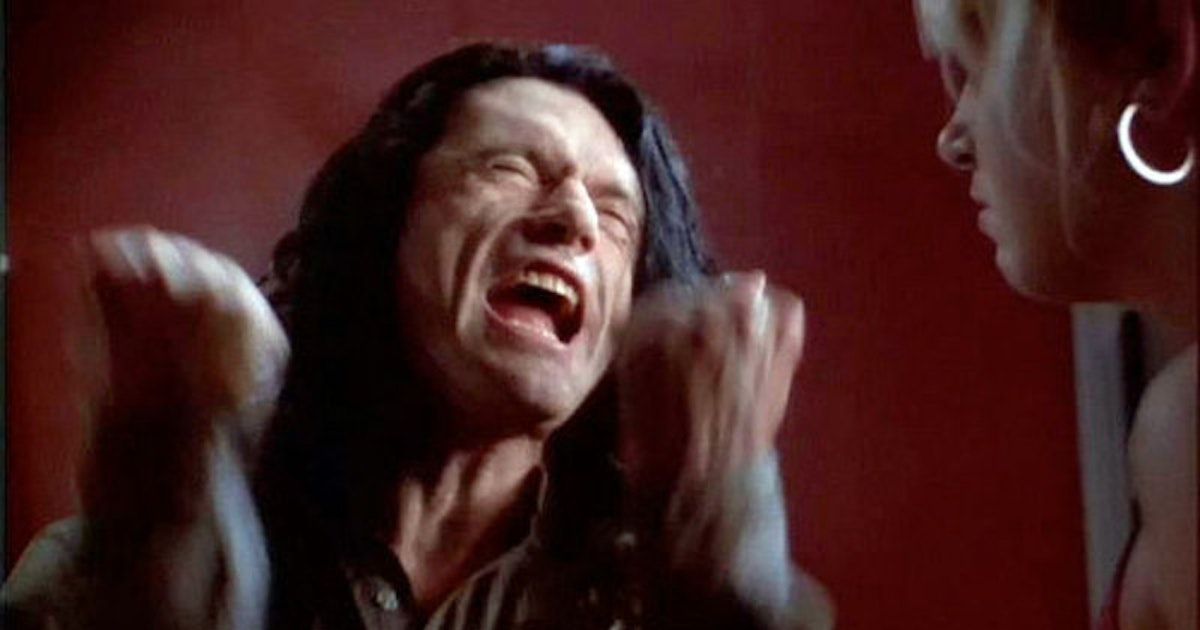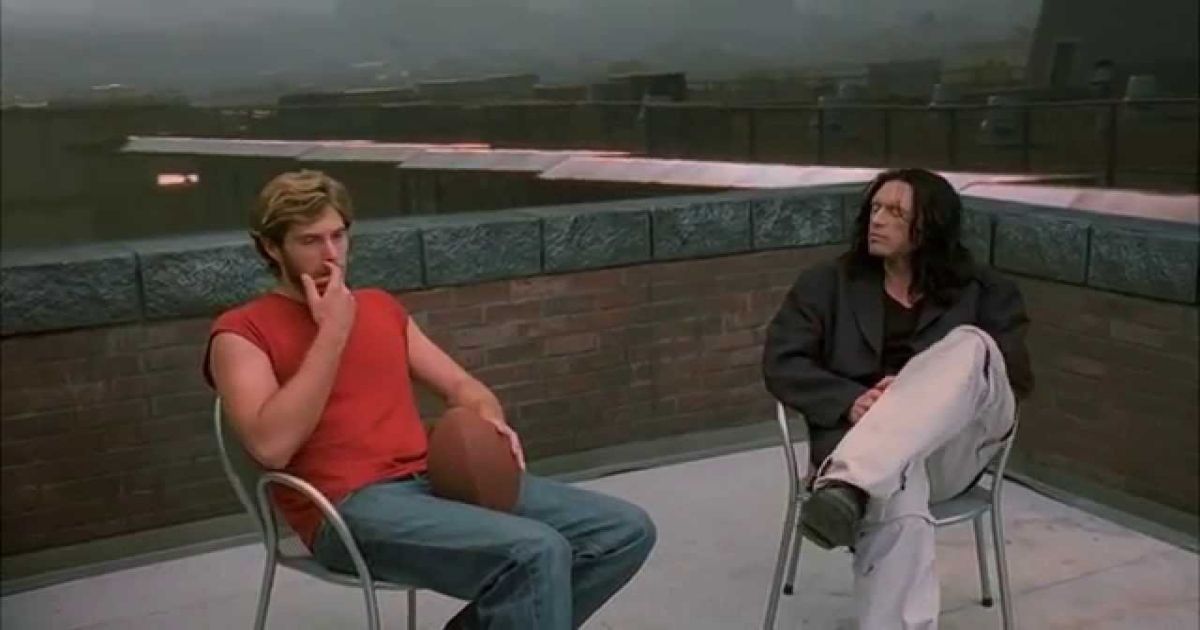Tommy Wiseau’s The Room is considered by many to be the worst movie ever made, but for some reason, we can’t stop watching it. Despite its initial critical and commercial failure upon its release in 2003, The Room has become a legendary cult film over the past 20 years. Though the film should never be considered Academy Award material, 2017’s The Disaster Artist (directed by James Franco) was nominated for best adapted screenplay by using Greg Sestero’s memoir about the making of The Room as source material.
When it comes to movies that are “so bad they’re good,” The Room is the template for this millennium, and will continue to hold that title for the foreseeable future. And when it comes to movies that could be used at film school to exemplify exactly how you shouldn’t make a movie, The Room also holds that title. In fact, The Room has even garnered the nickname "The Citizen Kane of bad movies."
To celebrate 20 years of The Room, we thought it would be a great idea to talk about the troubled production of this classic cult film, and give you a crash course on all the strange facts that we could put together about this true masterpiece of bad cinema. And if you’re an aspiring filmmaker, this article could also serve as a primer for exactly how not to make a film!
Shot on Both 35 mm Film and High-Definition Video
Being that The Room was Tommy Wiseau’s first film, he went into production with a total lack of experience, and little to no knowledge about different filming styles. Not only did he not know a single thing about writing, directing, starring in, or producing a film, he didn’t fully understand the difference between 35 mm film and high-definition video. So when it came time to make a decision on which format to use while marking The Room, Wiseau decided to use both, and shoot the movie with both types of cameras simultaneously.
Since Wiseau was the first filmmaker to ever shoot a movie using both formats, he had to adapt to his innovations by purchasing a custom-built apparatus that held both camera types, and required two different camera crews to operate. To complicate matters, both camera types required different kinds of lighting and editing because of their vastly different styles of capturing video. All of the above already sounds like a massive headache, and you’ll be even more perplexed to know that after all of this struggle, only the 35 mm footage was used for the final theatrical cut of The Room.
Cameras Were Purchased Instead of Rented
Renting cameras to make a film is a common practice, especially if you’re making your first film. If you’ve got deep pockets, and a five-year plan (for example) to make a set amount of films that are slated to make a set amount of money, purchasing cameras might actually make sense if the budget allows it. In other words, repeated use of the cameras will save you money a ton of money over an extended period of time if you own them outright.
In Tommy Wiseau’s case, he purchased two Panasonic HDX-900 digital cameras ($26,500 apiece), an Arriflex BL4 35 mm camera (roughly $65,000), and about a dozen high-end lenses. In addition to purchasing these cameras, Wiseau had to hire different crews to operate both cameras, and shoot each scene multiple times. This expense was only compounded by the fact that Wiseau had a very high crew turnover, with some sources stating that he replaced the entire camera crew four times during production of The Room.
Sets Were Built for Scenes That Could Have Been Shot on Location
According to Greg Sestero, who wrote a memoir entitled The Disaster Artist which chronicles his experience starring as Mark, as well as his experience behind the scenes, Wiseau made a long string of poor financial decisions like the above-mentioned camera procurement. One such decision was having sets built on the Birns & Sawyer sound stage in Los Angeles rather than shooting particular scenes on location. So instead of procuring a permit, and spending pennies on the dollar shooting a rooftop scene on an actual rooftop, Wiseau had a fake rooftop setting built, and used a green screen for the exterior shots of San Francisco which cost thousands of dollars to be constructed despite its limited use in the film.
There’s no doubt that the rooftop scenes in The Room are memorable, but they definitely could have been done on the cheap if Wiseau listened to his constituents, and just shot these scenes on location. When you consider the aggregate cost of booking a production lot, housing the sets, the setup and breakdown time, and post-production edits, the price tag behind the production of The Room would only continue to climb as principal photography took much longer than expected.
Total Budget Reached $6 Million
With financial missteps comes a staggering budget for a film like The Room, which gives off a daytime soap opera vibe in its final iteration. When you consider decisions like purchasing cameras, building unnecessary sets, and replacing the cast and crew many times over while filming, it makes sense that this production cost a staggering $6 million, and honestly it's surprising that it didn’t cost more.
Sestero has also gone on record stating that Tommy’s scenes, some of which were only minute-long sequences, took hours, and sometimes days to successfully capture because Tommy couldn’t remember his own lines or stage directions. So not only did the equipment and set cost a pretty penny, there was a film and production crew on the payroll, and they had to be compensated for their time on set.
Tommy Wiseau Personally Funded the Movie
Despite The Room’s budget, Tommy Wiseau personally funded the entire movie. To this day, nobody knows how he had the money to accomplish this. According to Greg Sestero’s book, Wiseau was very secretive about his financial sources, and there are a number of prevailing theories about how he raised his funds.
The simplest explanation is that Wiseau came from old-money wealth, and was therefore independently wealthy. A second, more unlikely theory is that Wiseau generated some of his wealth by importing and selling leather jackets from Korea. Other theories that have since been dispelled by Sestero include a money laundering scheme for organized crime, as well as a fortune that Wiseau amassed through real estate deals in Los Angeles and San Francisco.
The Woman in the Flower Shop Was Not Actually an Actress
One of the more memorable scenes in The Room ironically takes place on location at a flower shop. In this particular scene, Wiseau’s Johnny character quickly steps into a flower shop to buy a dozen red roses for Lisa. The woman behind the counter wasn’t an actress who was hired to be in the film, but rather somebody who actually worked at the shop.
To make matters a little more weird, the infamous “hi doggy line” was improvised by Wiseau, who didn’t notice the dog sitting on the counter at first when they were shooting the scene. Sestero has gone on record stating that Wiseau later asked the flower shop owner if the dog was “real.”
Tommy Wiseau Paid to Keep the Film in Theaters, so it Would be Eligible for Oscars
Though The Room is a profitable film now due to its cult movie status, this wasn’t always the case. At this point in time, The Room has a legacy for being so bad that it’s celebrated with midnight showings across the country, and has racked up $30 million, strangely making the movie a commercial success nearly 20 years after its initial theatrical opening.
However, the initial ticket sales were abysmally low, making less than $2,000 on its opening weekend. These low ticket sales caused The Room to immediately be pulled from cinemas. Thinking that he produced a masterpiece, Tommy Wiseau personally paid to keep the movie in theaters for two weeks. For those of you who don’t know, a movie has to be in theaters for at least two weeks in a major city to be eligible for an Oscar nomination. But despite his efforts, The Room didn’t receive a nomination.
Ironically, The Disaster Artist Was Nominated for Academy Award
We’ve mentioned Greg Sestero a few times in this article, and this particular entry is the reason why. Greg Sestero played Mark in The Room, and worked very closely with Tommy Wiseau. His memoir about working with Wiseau, appropriately titled The Disaster Artist, caught the interest of James Franco, who adapted the book into a screenplay that boasts the same title. The Disaster Artist went on to receive an Oscar nomination for Best Adapted Screenplay.
For those of you who have heard about The Room, but don’t quite have the taste for movies that make you cringe, The Disaster Artist is a masterpiece in its own right, and utilizes the source material written by Sestero. While The Room is a very uncomfortable movie to watch at some times, The Disaster Artist is a somewhat accurate representation of what happened on set, and leans heavily into the troubled production of The Room in a way that’s highly entertaining.
One of the common recurring motifs in The Room is the fact that everybody is always tossing a football around; on the roof; in tuxes at a wedding; in the alley. There are several scenes in which the guys are just chatting and throwing the old pigskin around, that don’t add anything to the movie. Given Tommy Wiseau's unknown origin and accent, there is a comment on YouTube that sums up the football playing perfectly: "It’s like a movie about American life from the outside, written by someone that doesn’t understand the language but watches a lot of American TV."
Another odd Easter egg is the fact that most of the framed artwork in Johnny’s apartment is just pictures of spoons. Rumor has it that when The Room was being filmed, they bought picture frames for the apartment, but nobody thought to switch out the generic artwork that came with them with actual photos. For this reason, most of the picture frames just have generic spoon pictures in them.
Fans who adore this movie love the lore behind the football and spoons, and at midnight showings, they bring their own footballs and spoons to throw at the screen as a way to celebrate the film.
A Lot of the Dialogue Was Dubbed in During Post-Production
We mentioned earlier that Tommy Wiseau, who wrote, directed, produced, and starred in The Room, had a lot of trouble reciting his own lines, and took an exceptional amount of time shooting his own scenes. After four months of filming with both 35 mm and high-definition cameras, the dialogue was still problematic in many ways, which required Wiseau to dub in a number of his lines in post-production.
If you didn’t catch this on the first watch, we strongly recommend you go back and take another look. There are scenes where the lips don’t appear to sync entirely with the dialogue, and it’s not because The Room melted your brain, but because the audio and video aren’t actually properly synced.
10% of the Movie Is Sex Scenes
The Room has a run time of 99 minutes, and 10 of those minutes are sex scenes. In other words, 10% of The Room involves Tommy Wiseau’s Johnny character having sex with Lisa. Juliette Danielle, who played Johnny’s Girlfriend, Lisa, was shocked that so much of this footage was used in the final cut, originally assuming that the sex scenes would play out for just a few seconds.
Rejected by Paramount Pictures for Distribution Within 24 hours
Films normally need to go through a review process to get distribution from a major studio. According to Greg Sestero, Tommy Wiseau submitted The Room to Paramount Pictures for distribution, hoping to hear back from them in a couple of weeks with a “yes” or “no,” but upon reviewing The Room they rejected the film within 24 hours, which must be some sort of record.












Comments
Post a Comment